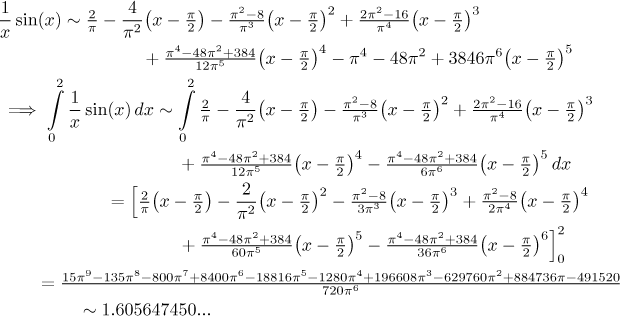27: You should get

The Lagrange estimate of the error is

Determine the maximum in the formula.
Alternative: An experienced problem solver would get scared by the
above result, since he/she knows that worse is to come. The first idea,
a = 0, is beginning to look better and better.
Granted, the function f is not defined there, but it does have a
convergent limit at 0. This means that the definition of this function
can be extended also
to 0 in such a way that we obtain a continuous function on the whole real
line. Remarkably, also f ′ that we obtained above has a
convergent limit at 0, so it also can be continuously extended to include 0
in its domain, and one can check that this extended function still works as
the derivative of f (that is, it also works at 0). Even more
remarkably, the same is also true for all derivatives that we calculated,
including the ugly long ones, and miraculously convergence at 0 is always
obtained just by using one l'Hospital's rule.
Thus it is possible to find the Taylor polynomial with
a = 0,
just instead of directly finding derivtives one has to work with limits of
the above expressions. Do it.
Next hint
Answer


![]()